Findagrave.com has records for this cemetery, and several graves within the cemetery.
The Commonwealth Graves Commission website doesn't record any wartime graves in this cemetery.
Photos that show this Place
Comments
Findagrave.com comments that this cemetery is "......for members of the family of Sir Robert Ho Tung as well as the Eurasian community." Not strictly correct. The land was originally granted to Ho Tung and his brother Ho Fook to hold in trust for use as a cemetery for Eurasians. There is a widely held and mistaken view that the cemetery is a private one for the Ho clan.
Let's move the relevant comments from http://gwulo.com/node/6352 to this Place.
In 1899 Robert Ho Tung asked for a change in the boundary of the Eurasian Cemetery, established in 1897. He said that there were many Chinese graves within the original boundary that he did not want to disturb. Government was dubious because by 1899 only three graves were there, and all were of Ho Tung's relatives. Ho Tung then said that the cemetery was not being used because it had not been properly laid out and walled. He committed to spending $8,000 for a wall, a chapel and roads for the lower areas, personally pledging $2,500.
Ho Chong (the little house has an address of 40A Smithfield)
Another extension was requested in 1914 and a new lease issued in 1915. Part of the new land is named Ho Chong and the graves are Ho Kom Tong's family. A Memorial Building. actually a two bedroom bungalow, was built on Ho Chong in 1915. It had a kitchen and each bedrooms had a toilet. But it was normally used for family picnics and a personal retreat and garden for Ho Kom Tong since it was not used as a burial site until 1932. Ho Kom Tong himself, was buried there in 1950.
Robert Ho Tung was the sole trustee at his death in 1956. The Cemetery was then incorporated. In 1968, the deed was surrendered and another one granted.
Location of 40A Smithfield - HO CHONG
[gmap markers=big blue::22.278227327610047,114.1287278830896 |zoom=19 |center=22.278051974750092,114.12874191999435 |width=480px |height=350px |control=Small |type=Map]
Lady and Sir Robert Ho Tung were NOT buried in the Chiu Yuen Eursian Cemetery that he helped established. They were buried in the more prestigeous Colonial Protestant Cemetery in Happy Valley.
The irony is that they now share the dirty air and noise of the Aberdeen Tunnel, while Chiu Yuen is much more peaceful.
Jaber33, interesting to hear another view on the original purpose of this piece of land. Any references you can add to help verify will be very welcome.
Annelise, yes if you'd like to move the comments over (this is the easiest style I've found) I'll remove them from the pillbox thread. I also recomend that the Ho Chong comment goes into its own place, or a few months later we'll be splitting that out too.
Regards, David
David, please see Eric Ho's "Tracing My Children's Lineage", page 338. Eric Ho writes ".........on 13 December 1915 that inland lot 1415 was formally granted premium-free to Sir Robert Ho Tung and Ho Fook, as trustees, for use as a cemetery for the Eurasian community......."
As regards Ho Chong, please see page 339 of Eric Ho's book. He writes ".....Ho Chong is not a separate private cemetery. It lies within the boundary of Inland Lot 1415........."
Chiu Yuen Cemetery - short history
The short history quoted here needs to be taken with a large dose of salt. My own albeit limited research indicates that the land on which the Chiu Yuen Cemetery is located was granted by private treaty to Ho Tung and Ho Fook to hold in trust for the Eurasian community of HK for use as a cemetery. There is no mention of HKT as a grantee. I have been unable to establish how much, if anything, was paid for the land, but I believe it was peppercorn. The inference that the land was "bought" is thus questionable. It would also appear that what is referred to as "Ho Chong" is in fact part of the land granted to the trustees for the Eurasian cemetery, and not "adjacent" to it. The claim that Ho Chong was acquired by HKT is not supported by any research results. And as HKT was not himself Eurasian it must be asked why he was allowed to fence off a part of the land for his "own private cemetery".
Now we get to the fun part. Tracing all the deed transfers. You have to start with the original grant from the Government to the Military.
The grant deed from the military for the cemetary itself, if you have seen it, should describe the exact location of the land, or have an attached map. This will show if Ho Chong is part of the grant, or not.
Since the trust deed must have been transfered to the existing Cemetary Trust, that transaction, too, must be recorded somewhere.
Most grateful for these suggestions. In fact they have all been done, more or less. But my purpose was not to initiate action to change this questionable state of affairs, but rather simply to place on record the inaccuracies contained in the brief history which you posted.
Now I am very curious to see the original grant of land for the Cemetery. So far, there is only conjecture - which is always fun of course. Is there a map we can see ? If so, it is a public document.
Do you know the lot number of the Cemetery? We can look it up that way, too.
Lastly, which part is Ho Chong? - the separate bit by the Pok Fu Lam Road ?
Granting of land to trustees for a particular purpose was very common in Hong Kong - e.g. the Ladies Recreation Ground.
Eric Ho in his book Times of change: a memoir of Hong Kong's governance, 1950-1991, said that after Sir Robert Ho Tung died:
in 1955, a trust company was formed to carry on the Trust and manage the Cemetery.
If this is the case, then details about the Trust are around somewhere.
The cemetery stands on Inland Lot 1415. There is a pavilion with large Chinese characters for Ho Chong indicating that reserved part of the cemetery. The grant was made to the two brothers Ho Tung and Ho Fook to hold in trust. Following Ho Fook's death Ho Tung continued as sole trustee. When he died the Chiu Yuen Cemetery was incorporated under the Companies Ordinance, and the Memorandum of Association gives, as an object of the Company, the assumption of the trust.
This lot is not showing on the online Lands Registry search. It appears that the original lease expired, or split off and a new lot formed. (or I typed it in wrong)
And here are some fun things to check out at the Public Records Office - I searched "1415" before 1920 and after 1920 and "Eurasian Cemetery"
| File HKRS58-1-14-44 |
EURASIAN CEMETERY, INLAND LOT 1415 - APPLICATION FROM MR. HO TUNG TO ALTER THE BOUNDARIES OF THE - , 27.03.1899 - 08.05.1899 |
| Map CO-129-411p484 |
Plan of Eurasian Cemetery showing proposed extension, 23 June, 1914. , 1914. |
| File HKRS58-1-22-54 |
CROWN LEASES - TRANSMITS THE - OF I. L. 1415 FOR THE PUBLIC SEAL OF THE COLONY , 02.09.1903 - 04.09.1903 |
| File HKRS58-1-68-4 |
PATH LEADING FROM INLAND LOT 1883 (KENNEDY TOWN) TO THE EURASIAN CEMETERY (INLAND LOT 1415) - AS TO IMPROVEMENT OF , 24.12.1912 - 12.03.1913 |
| File HKRS58-1-69-17 |
EURASIAN CEMETERY INLAND LOT 1415 - PROPOSED EXTENSION , 27.03.1914 - 06.08.1914 |
| File HKRS265-16A-79-1 |
I.L. NO.1415 - CROWN LEASE , 30.12.1915 |
| File HKRS265-16A-79-2 |
I.L. NO.1415 - CROWN LEASE, COUNTERPART , 30.12.1915 |
| File HKRS265-16A-79-3 |
I.L. NO.1415 - ASSIGNMENT , 17.03.1960 |
| File HKRS265-11A-1774 |
I.L. NO. 1415 - DEED OF SURRENDER , 11.06.1968 |
Most interesting. I was aware of the 1914 extension and the 1915 Crown Lease. But the last two items puzzle me and I shall have to make further enquiries. The 1960 assignment was presumably to the incorporated Company, but what was the 1968 Deed of Surrender? Thank you for bringing it to my attention.
The reality though, are the current lease conditions, not the ones a hundered years ago - and is "Eurasian" defined anywhere. Do you even have to prove you are "Eurasian" to be buried there, or is it at the discretion of the Trust ?
In this day and age, any benefit that is granted based on "race" is rather peculiar, since there is no DNA test that can identify one "race" from another.
Good questions. I know for a fact that there is no legal definition of "Eurasian". You probably are aware that the Welfare League founded many years ago to look after destitute Eurasians defined these as the issue of foreign men and Chinese women. So if your father was Chinese and your mother white, you were not eligible for assistance from the Welfare League. Not surprisingly, the people in charge of the League have always had a largely common membership with the people in charge of Chiu Yuen.
Generally speaking, the term Eurasian in HK was applied to people who belonged to neither the foreign community nor the Chinese community, and was not dependent on race. So if your father was not Chinese, you could not be accepted by the Chinese community for you lacked all the necessary family ties - e.g.ancestral tablets. On the other hand, the foreign community would not accept you because your mother was not white. Robert Kotewall is often regarded as a Eurasian, but his mother was Chinese and his father Parsee, so he was not accepted by either community - hence "Eurasian".
I also know for a fact that burial in Chiu Yuen is entirely at the discretion of the Company directors. This is because to be buried there you must have been a member of the Company, or your surviving next of kin has to be a member, and membership is subject to the approval of the directors. Needless to say, the directors are heavily weighted in favour of the Ho clan.
And so, one just has to find out when the lease expires.
Not really sure of the relevance of this, but the original private treaty grant to Ho Tung and Ho Fook was for 999 years from 1st March, 1897. This lease was assigned to the incorporated Company in 1960. So presumably the lease will expire in 2896.
found a couple of paragraphs on Pg. 23 of the book "Intercultural Reminiscences" (ISBN: 962-8027-02-6. David C. Lam Institute for East-West Studies, Hong Kong Baptist University. Hong Kong, 1997) by Dr. Irene Cheng (daughter of Robert Ho Tung) that are relevant to this discussion. "Fifth Uncle" is Ho Kom-Tong and "Mamma" is Clara Ho Tung.
"Anyway, Fifth Uncle had many friends who were also well versed in fung shui. When he was still quite young, Fifth Uncle bought a large piece of government land adjoining the Chiu Yuen Cemetery, near Mamma's gravesite but lower down the hill. He then proceeded to carefully develop it, giving the name of Ho Chong, meaning Farmstead of the Ho Family, to his section of the cemetery. He even installed an iron gate at the entrance bearing his name. I vividly remember Fifth Uncle telling us that when he died, all his family would have to do would be to put his coffin in the grave and add the date and hour of his death according to the traditional Chinese system of Heavenly and Earthly Stems, which gives a special name to each two-hourly time period. He had already prepared the tombstone with the name, date of birth, and all the necessary information except the date and hour of death engraved on it. He had removable wooden covers made for each tombstone while the future occupant of the grave was still alive.
......
"Fifth Uncle first prepared two graves, one for himself and one for Fifth Aunt, on the highest level of his land, some 20 feet below Mamma's grave. On a lower level, he planned other chambers for some of the concubines, and on a third level there was a large space available for some of the sons and daughters-in-law. Presumably the daughters would be married and their burial would then become the responsibility of their husbands' families. Beyond the gravesites was a little house or pavilion where members of the family could rest whenever they visited his "farmstead." There were two bedrooms, one on each side, and a living room in the centre of the house. While he was still alive, Fifth Uncle would sometimes go to his little villa "to get away from it all." On the western side of his land, away from the roadway, he laid out a vegetable garden that provided some of his households with fresh produce. In a way, Fifth Uncle knew how to enjoy life."
From this description, Ho Chong and the Chiu Yuen Cemetery are on separate lots.
I wonder if the book "Ho Kom-Tong: A Man for All Seasons" gives any clues?
Bosman went to England
by email:
I have located Charles Bosman and his American wife in the 1881 and 1891 UK censuses as being based in Kensington in London. They had 4 boys and one girl. It seems that some of the family went to the States to live after Charles death in 1892 but made a number of visits back and forward. One of the sons had links with Durban.
I have a copy of the 1898 map of the new lot, a bit was taken off the top, and a quit a bit added to the bottom.
From the maps above you can see that there have been extentions to the Chiu Yuen Cemetery since it was first established on 1 March 1897.
There is a section on the Cemetery in Peter Eric Ho's new book, Tracing My Children's Lineage.
Mothers and others. So who were buried in the cemetery before it existed? I've gleaned these, but I need the experts to correct me.
1892 - SIN Lam Sze (Sin Tak Fan's first wife? ) & SIN Chung Sze, a joint grave.
1894 - LAM
1896 - Sir Robert Ho Tung's mother, Ms. SZE.
1898 - Sin Tak Fan (Stephen Hall)'s mother (or grandmother), SIN Wong Sze.
In the Web - by Peter Hall
Sin Tak Fan, I have been told, was cared for by his maternal grandmother (nee Wong) and who is buried in grave no. 23
1897 the cemetery was first established - brothers Ho Tung and Ho Fook trustees. 1998 - requested and granted an extention. Only three graves were in the cemetery at that point. In 1903, the lease needed a "Crown Seal". 1914, another extention is requested, and it was learned that a lease had never been formally granted. 1915 - Lease granted retroactively and another extention given. 1915 - Ho Chong, built by Ho Kom Tong on part of the new extention.
There is a story of the third Ho brother, Ho Kom Tong going off to England to get permission from the Admiralty for the land, because it originally was the War Department's. This story takes many forms and has different dates associated with it.
Annelise, thanks for tidying up the comments.
I tried searching for "1415" in HKGRO, but didn't find anything. A search for "Eurasian" only turns up Government Notification 522 on 25th Nov 1897, announcing that the Eurasian Cemetery is now an "Authorised Cemetery".
Regards, David
Why a Eurasian Cemetery ?
China is patrilineal. Almost no Chinese man here was native to Hong Kong. The men would have all wanted their bodies returned to their home village for burial, and the women were buried with their husband's family.
Non Chinese had been allocated burial grounds by religion, [and one generic Colonial Cemetery" for white people] which is the Wetern tradidition.
But if your father was European, his native village was not your native village. When the first Chinese mothers of rich Eurasians needed burial, they were placed in a Chinese burial grounds, Mt. Davis. Heaven only knows where Eurasians had been buried in Hong Kong for the first 50 years of British rule.
Now, put yourself in the position of a rich Eurasian man. You follow Chinese customs, your father is absent, you do not hold to a Western religion (I'm including Jewish, Islamic, Hindu and Zorastrian as "Western") so the thing to do is establish a cemetery where you can establish a "gown and hat" grave for your absent European father, buried elsewhere.
I quote from Eric Peter Ho's book, Tracing my Children's Lineage
a traditional Chinese custom followed by first-generation Eurasians was the establishment of Yee Gwoon Choong a "gown-and-hat" grave. Such empty graves were quite common in ancient China for people who had died far away from home or were lost at sea; they established a focus for the family to perform ancestral worship rites, like sweeping the graves at Ching Ming. Thus the tombstones of the matriarchs of the Ho and Lo families also show each patriarch's adopted Chinese name, making it a joint grave even though he was buried elsewhere; Ho Si-Man (CHM Bosman) and Lo Fu Wah (Thomas Rothwell) respectively.
When I search Geoinfo Map http://www1.map.gov.hk/gih3/view/index.jsp IL8812 shows a plot of land at Happy Valley near Mount Caroline Cemetery.
http://books.google.com.hk/books?id=OHCMAgAAQBAJ&pg=PA107&lpg=PA107&dq=…
Lo Tak-Shing caught my attention because of the article in Big Lychee blog about one of his employees, which linked to an SCMP article with more interesting stuff.
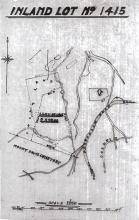
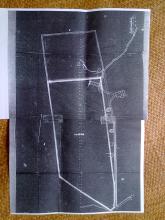
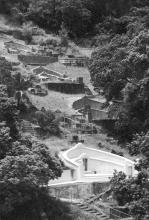

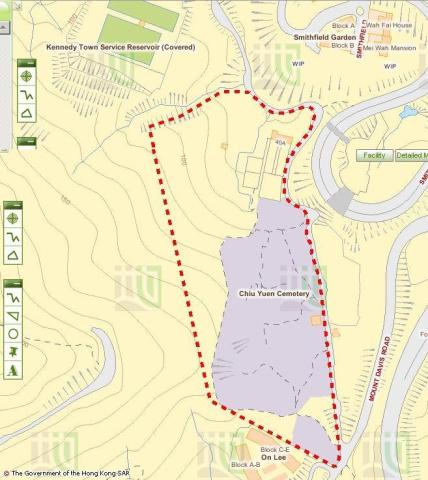
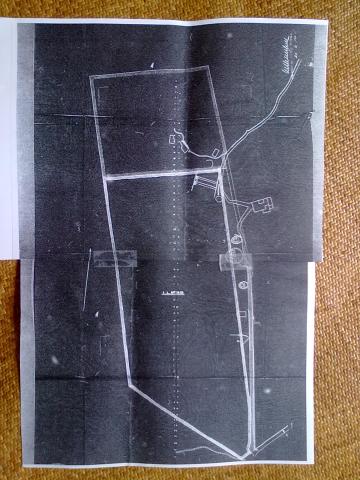
These comments were moved from the "place" Pillbox in Chiu Yuen Cemetery.
www.royalasiaticsociety.org.hk/newsletters/2006/2006_11.pdf
A short history of the Chiu Yuen Cemetery is given in a memoir about Ho Komtong published by some of his descendants:
“During most of the nineteenth century, there was no burial ground for Eurasians in Hong Kong. The Colonial Cemetery was exclusively for Westerners, and the Chinese Permanent Cemetery for Chinese. Being friendly with many officers, Ho Komtong and his brothers (Ho Tung and Ho Fook) were able to persuade the Government to let them buy part of Mount Davis off Pokfulam Road, which was under military command at the time. As private cemeteries were not permitted under English Law, however, Ho Komtong had to go to London personally to obtain written authorization from the military. Thus, in 1897, Chiu Yuen Cemetery for Eurasians was established on Mount Davis, with the Ho brothers as trustees. “Since Ho Komtong had negotiated the deal, he was able to acquire the choicest part of Mount Davis for his own private cemetery. Being knowledgeable in feng shui, he selected a hillside adjacent to Chiu Yuen Cemetery with a scenic view of Hong Kong harbour, and personally designed the layout of the graves. He named it ‘Ho Chong’, which means ‘Farmstead of the Ho family’.”